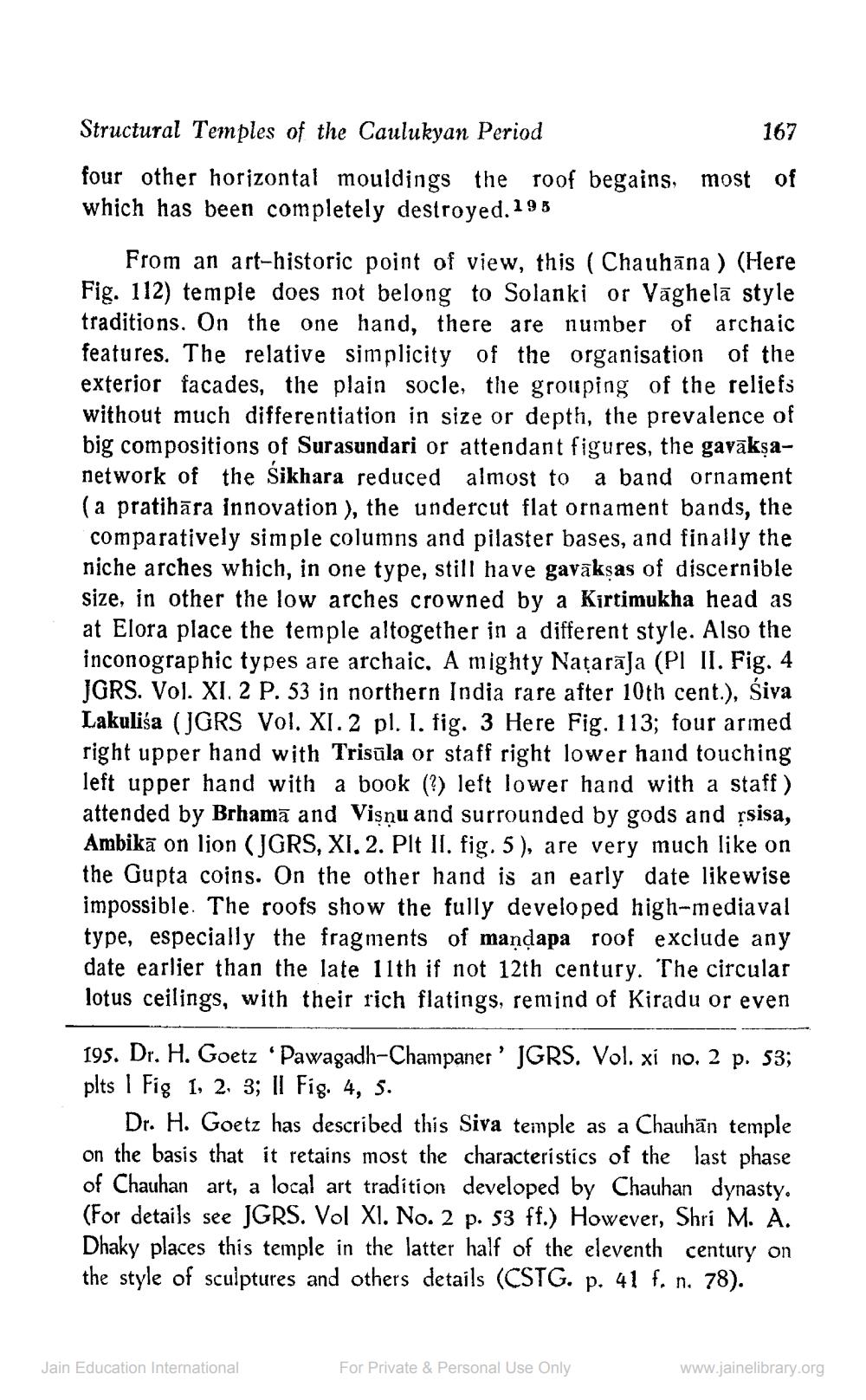________________
Structural Temples of the Caulukyan Period
167 four other horizontal mouldings the roof begains, most of which has been completely destroyed. 1 9 5
From an art-historic point of view, this (Chauhāna) (Here Fig. 112) temple does not belong to Solanki or Vāghela style traditions. On the one hand, there are number of archaic features. The relative simplicity of the organisation of the exterior facades, the plain socle, the grouping of the reliefs without much differentiation in size or depth, the prevalence of big compositions of Surasundari or attendant figures, the gavākşanetwork of the Sikhara reduced almost to a band ornament (a pratihāra innovation ), the undercut flat ornament bands, the comparatively simple columns and pilaster bases, and finally the niche arches which, in one type, still have gavāksas of discernible size, in other the low arches crowned by a Kirtimukha head as at Elora place the temple altogether in a different style. Also the inconographic types are archaic. A mighty Națarāja (Pl II. Fig. 4 JGRS. Vol. XI. 2 P. 53 in northern India rare after 10th cent.), siva Lakulisa (JGRS Vol. XI.2 pl. I. fig. 3 Here Fig. 113; four armed right upper hand with Trisūla or staff right lower hand touching left upper hand with a book (?) left lower hand with a staff) attended by Brhamā and Vişnu and surrounded by gods and rşisa, Ambikā on lion (JGRS, XI. 2. Plt II. fig. 5), are very much like on the Gupta coins. On the other hand is an early date likewise impossible. The roofs show the fully developed high-mediaval type, especially the fragments of mandapa roof exclude any date earlier than the late 11th if not 12th century. The circular lotus ceilings, with their rich flatings, remind of Kiradu or even
195. Dr. H. Goetz 'Pawagadh-Champaner' JGRS. Vol. xi no. 2 p. 53; plts 1 Fig 1, 2, 3; || Fig. 4, s.
Dr. H. Goetz has described this Siva temple as a Chauhān temple on the basis that it retains most the characteristics of the last phase of Chauhan art, a local art tradition developed by Chauhan dynasty. (For details see JGRS. Vol Xl. No. 2 p. 53 ff.) However, Shri M. A. Dhaky places this temple in the latter half of the eleventh century on the style of sculptures and others details (CSTG. p. 41 f. n. 78).
Jain Education International
For Private & Personal Use Only
www.jainelibrary.org




